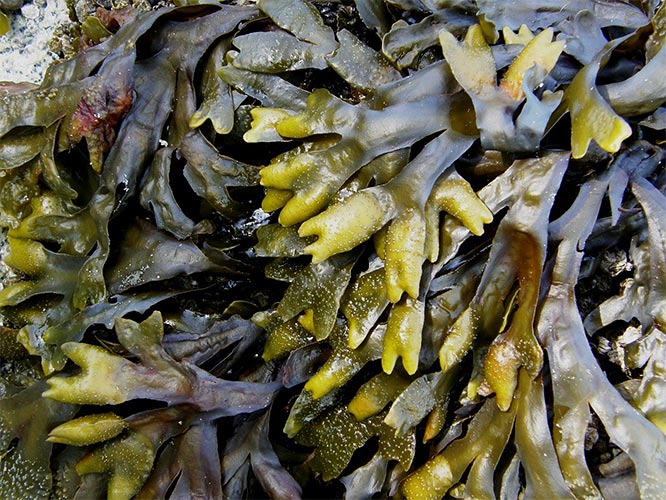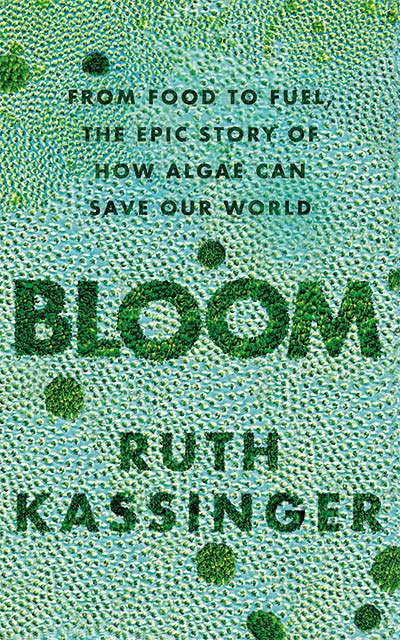
Disclaimer: This post contains affiliate links which means I may get a small commission if you purchase a product after clicking on a link. This does not cost you anything.
Recently I’ve read a really interesting and fascinating non-fiction book called Bloom: From Food to Fuel, the Epic Story of How Algae Can Save Our World (free PR sample).
The book talks about the importance of algae, how they helped to create the world we know today and a multitude of ways they are being used now, from food to fuel and more. I must say I totally loved the book; it was truly an eye-opener for me, I’ve learnt so much when reading it and I cannot recommend highly enough.
Ruth Kassinger has spent years researching algae and travelling the world to learn more about them and her book reflects everything that she learnt. The book is engaging and teaches us through stories which are captivating and informative.
Without further ado, here is what Ruth has to say about algae and why seaweed is so good for us:
Take a breath: half the oxygen you breathed in was made by algae. We don’t think much about algae, except when we see yucky, slimy scum on a pond. But if all Earth’s algae died tomorrow, we would soon expire, too and they are the base of the marine food chain: without algae, there would be no fish or any other sea animals.
A hidden part of daily life, algae are in your kitchen and bathroom. Listed as carrageenan or alginate, you’ll find them in ice cream where they prevent ice crystals from forming, in chocolate milk to keep cocoa suspended, and in salad dressing to keep the components mixed. Algae gel your toothpaste, thicken your body lotion, and coat tablets to hold the ingredients together.
Here is why we should all include more seaweed in our diets …
Algae as Food
Algae is a critical source of iodine for us. Without sufficient iodine, we have lower IQ’s. It also contains omega-3 oils that build brain tissue in fetuses and children and are important for brain health in adults.
Seaweed is highly nutritious. Many species contain higher levels of minerals and vitamins per serving than kale and spinach. Why not? They’re surrounded by ocean water full of dissolved minerals that pass into their cells.
Nori, the seaweed that wraps sushi, is particularly nutritious: four sheets—about the weight of seven paper clips—delivers a good dose of vitamins A and B complex, niacin, calcium, cobalt, selenium, iron, and iodine. And it has three amino acids our bodies need but don’t make.
Algae are also rich in protein. Nori, for example, is 50 per cent protein.
Spirulina, a single-celled algae species, is particularly rich in vitamin A. Grown by women in villages in developing countries, spirulina helps prevent deficiencies that threaten the eyesight of hundreds of thousands of children.
In Japan, people eat 14 grams of seaweed per day and have the world’s highest life expectancies and lowest breast cancer rates.
Brown seaweeds are especially rich in umami, a molecule that makes food taste “savory.” Adding a piece of dried kelp—called kombu—to a stew noticeably increases the richness of the dish.
Bloom: From Food to Fuel, The Epic Story of How Algae can Save our World includes recipes that incorporate seaweed such as the following:
Hummus with Seaweed
Ingredients:
125 g cooked or canned cannellini beans, reserving the bean liquid
3 cloves of garlic
5 tbsp tahini
3 tbsp extra virgin olive oil (or Thrive algae oil), plus a little for drizzling
2 ½ tbsp fresh lemon juice
2 tsp cumin
½ to 1 tsp ground coriander
½ tsp salt
1 to 2 packages (about 10g total) seaweed snack, ground in a food processor into small flakes, or 1 tbsp alaria or nori power
Instructions:
- Put all the ingredients in a food processor and pulse until you have the texture you like. Add bean cooking or can liquid as necessary to thin mixture.
- Put in a serving dish, drizzle oil on top, and serve with pitta wedges or crackers.

